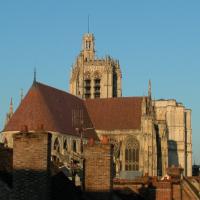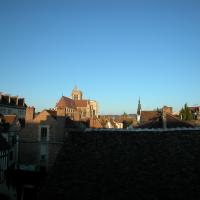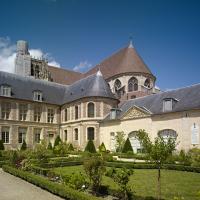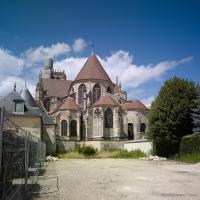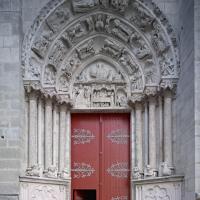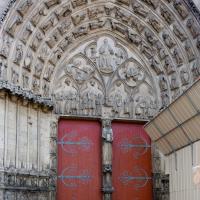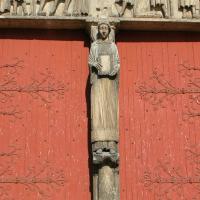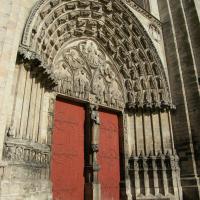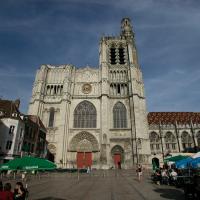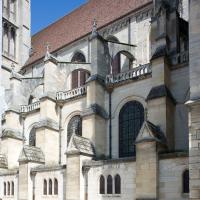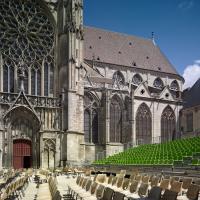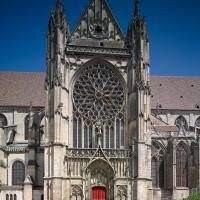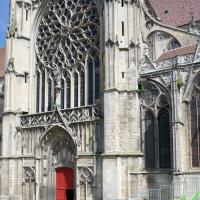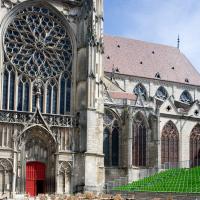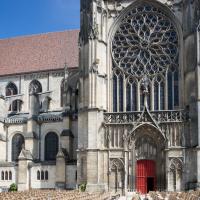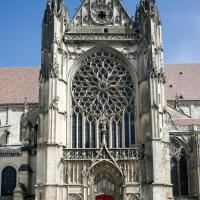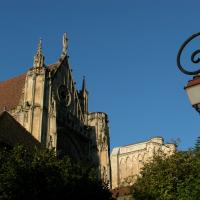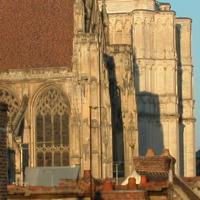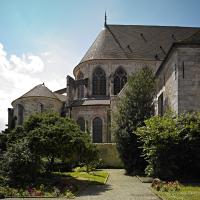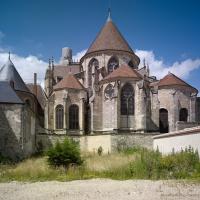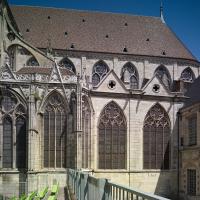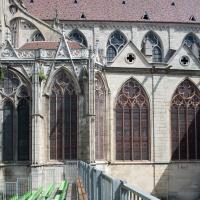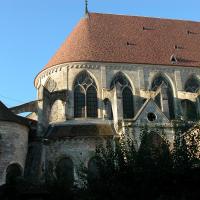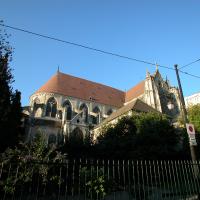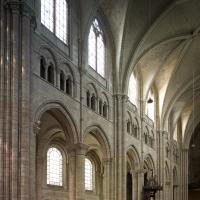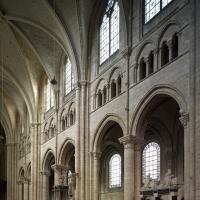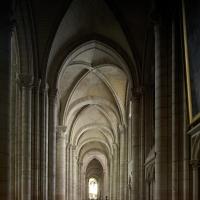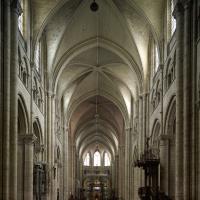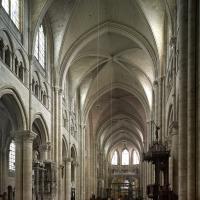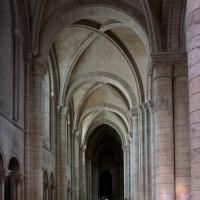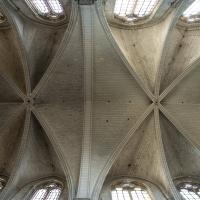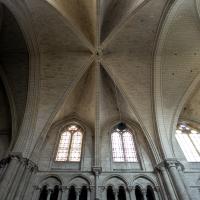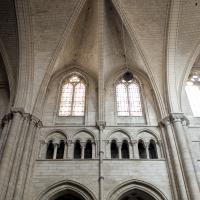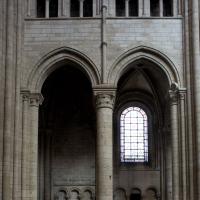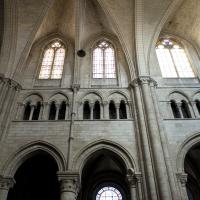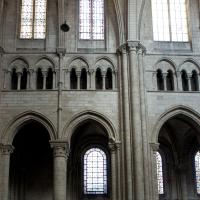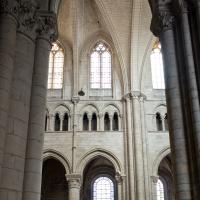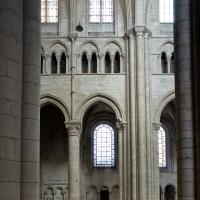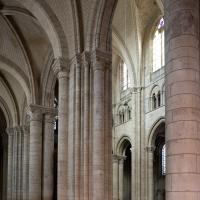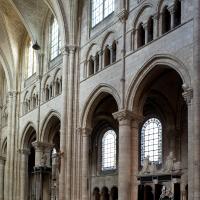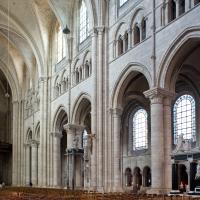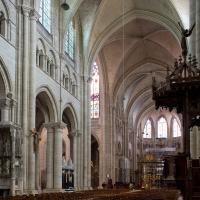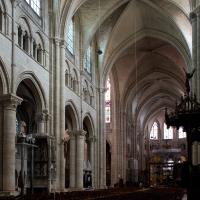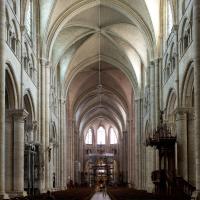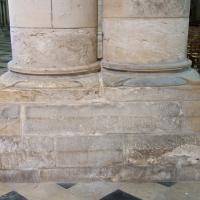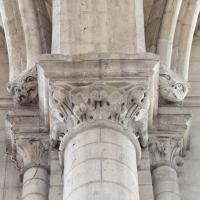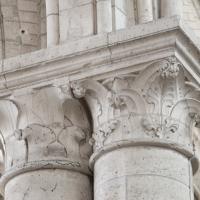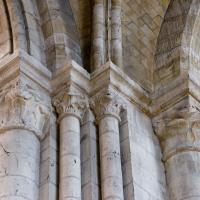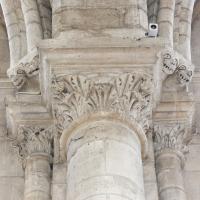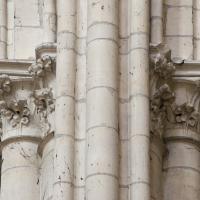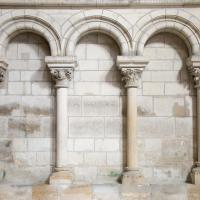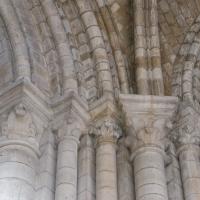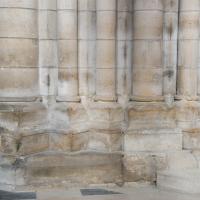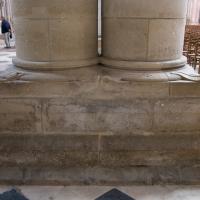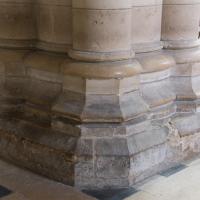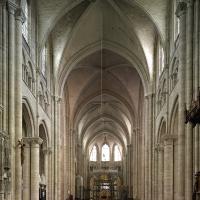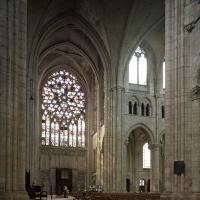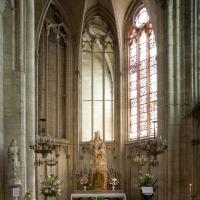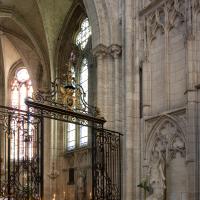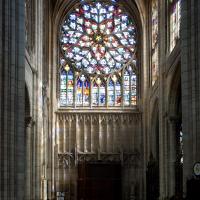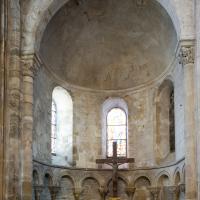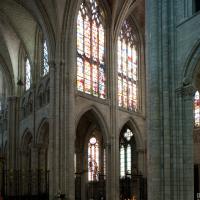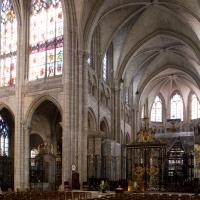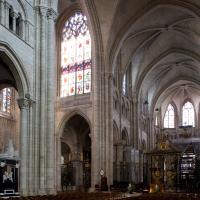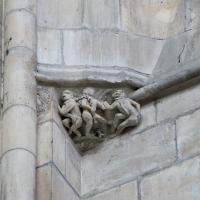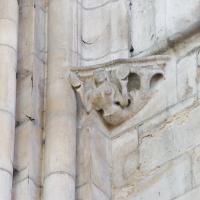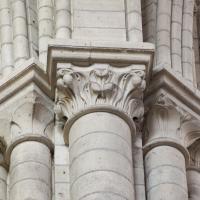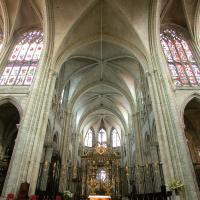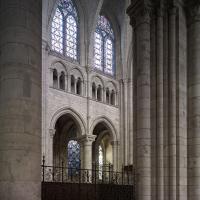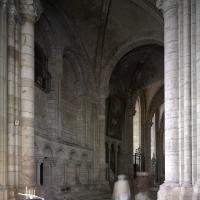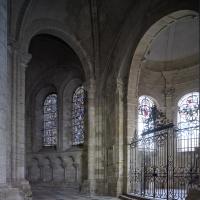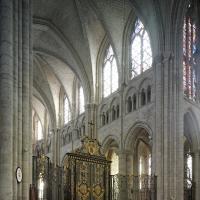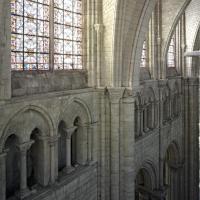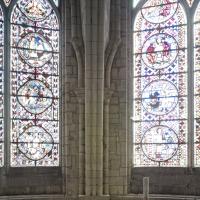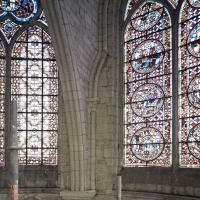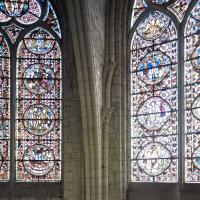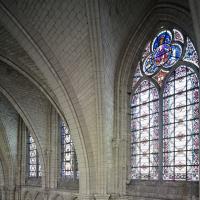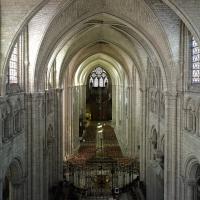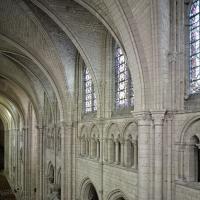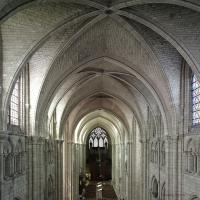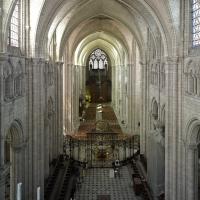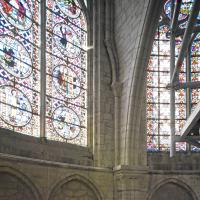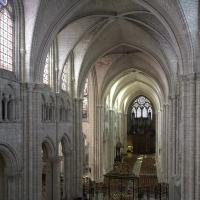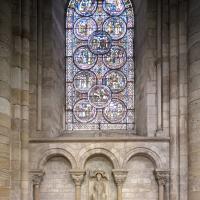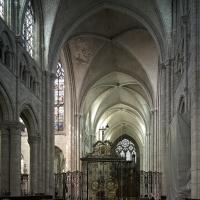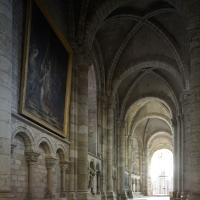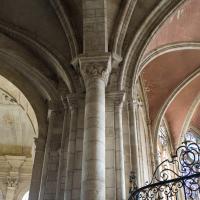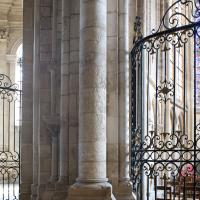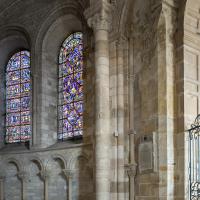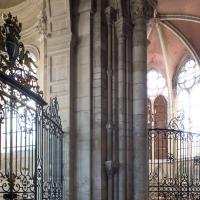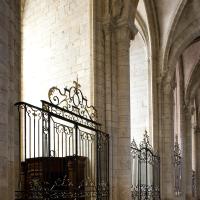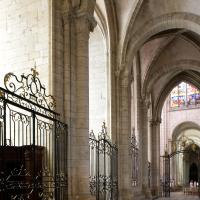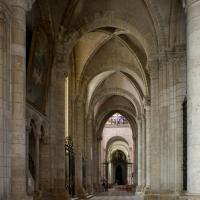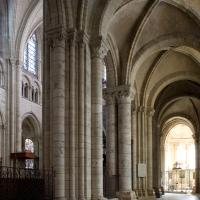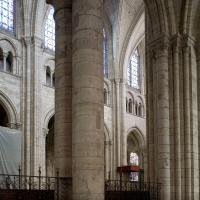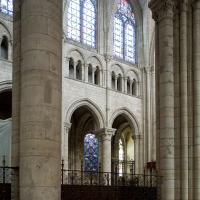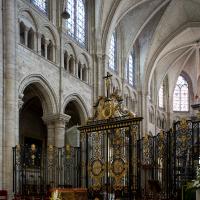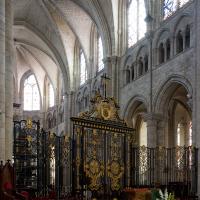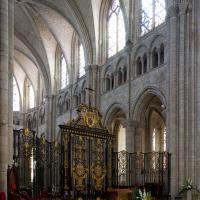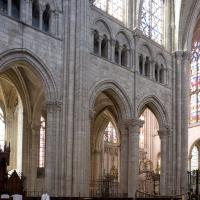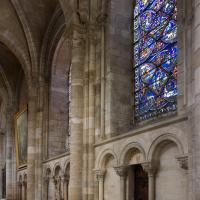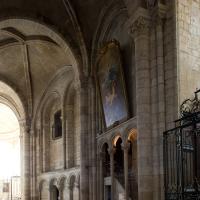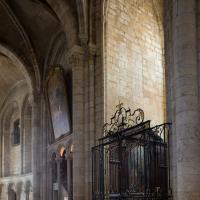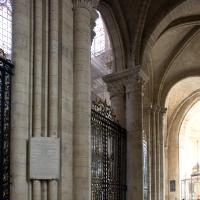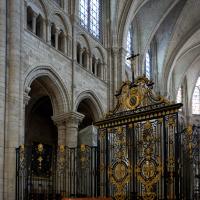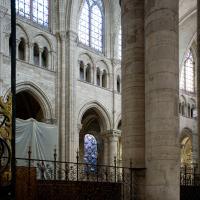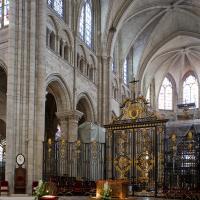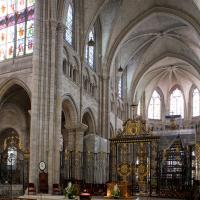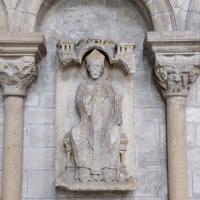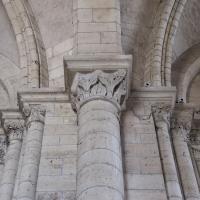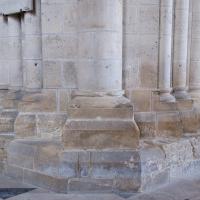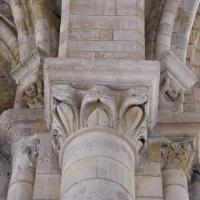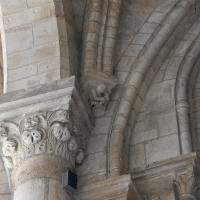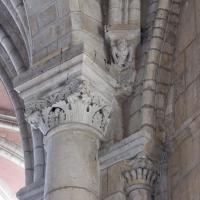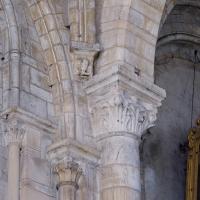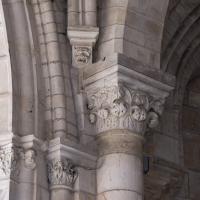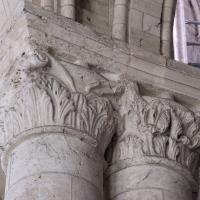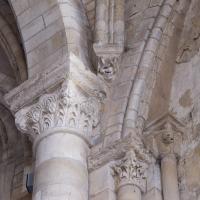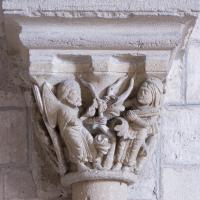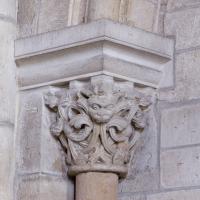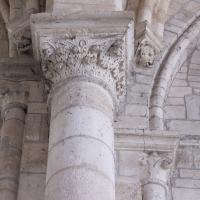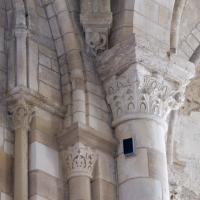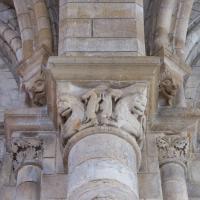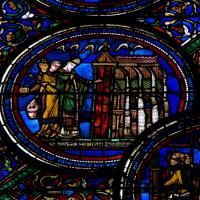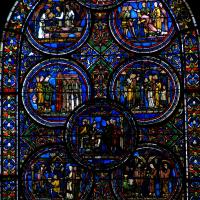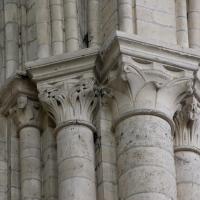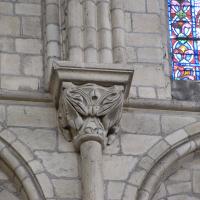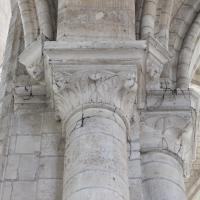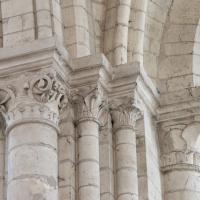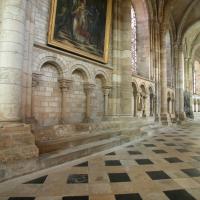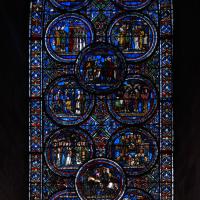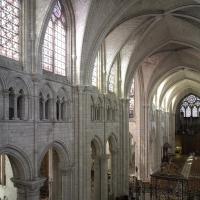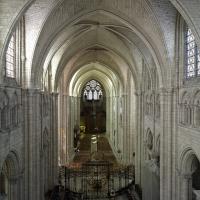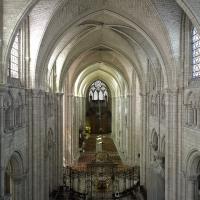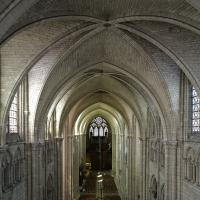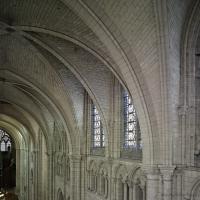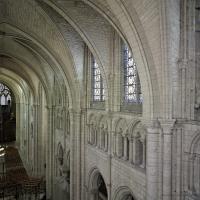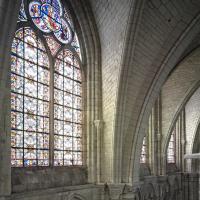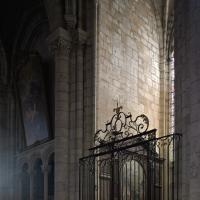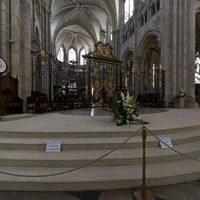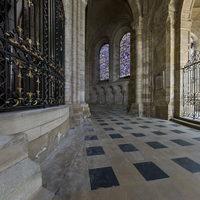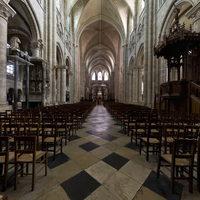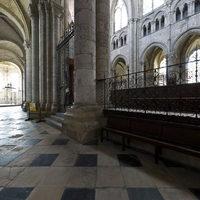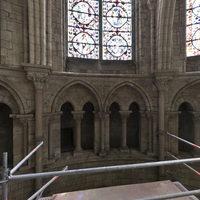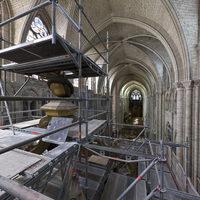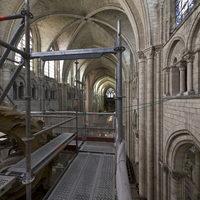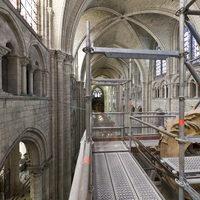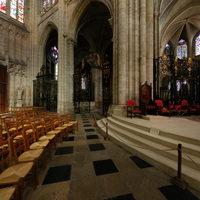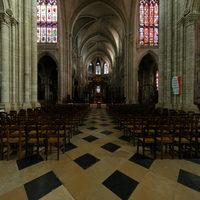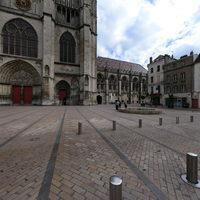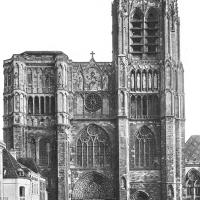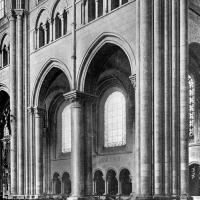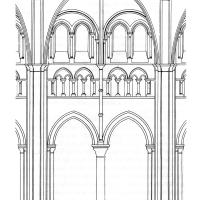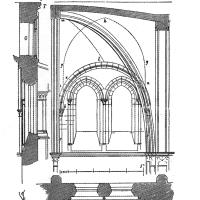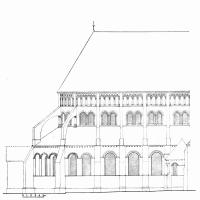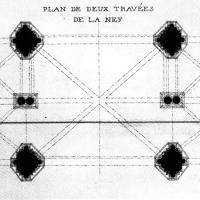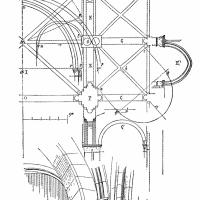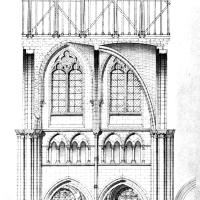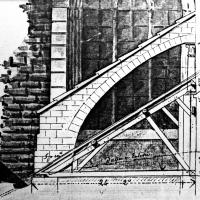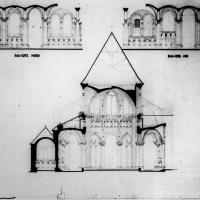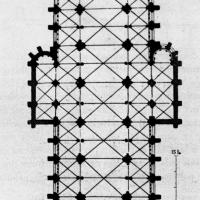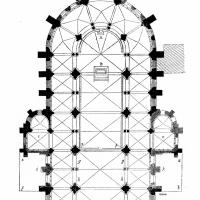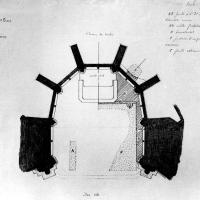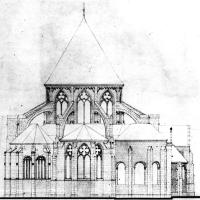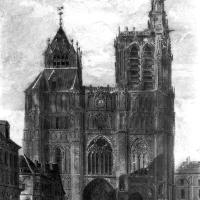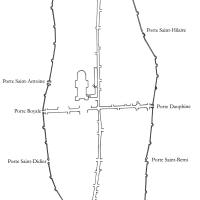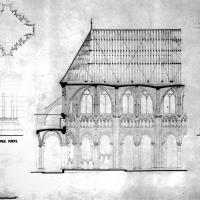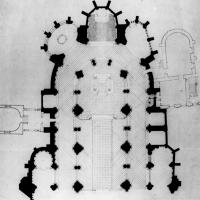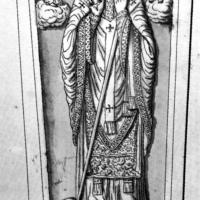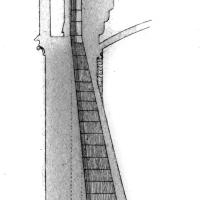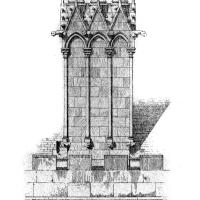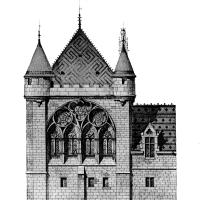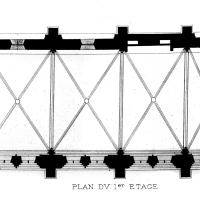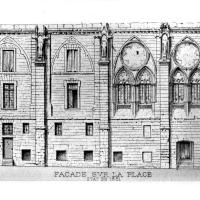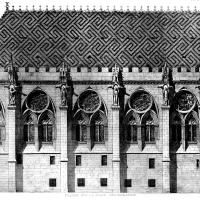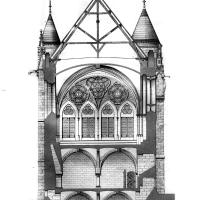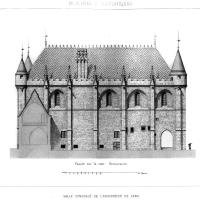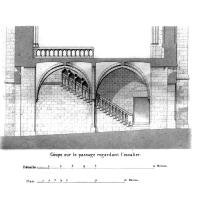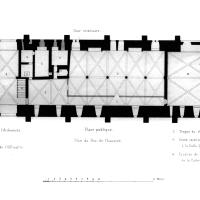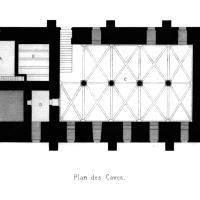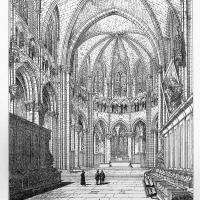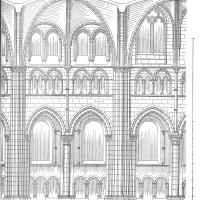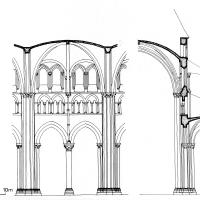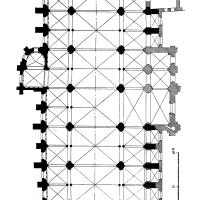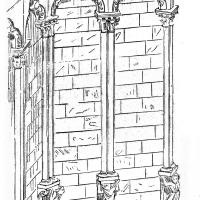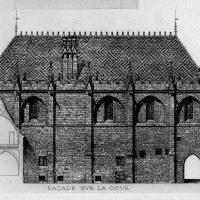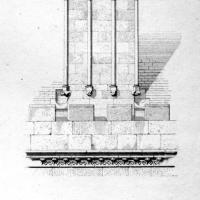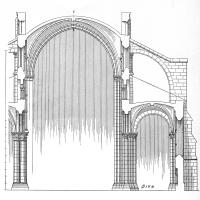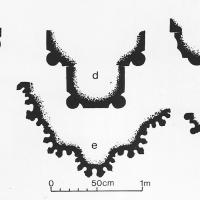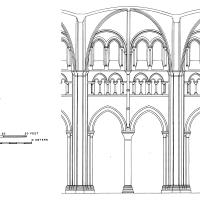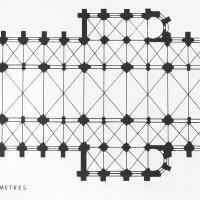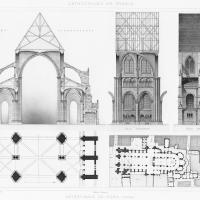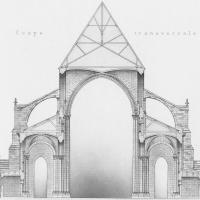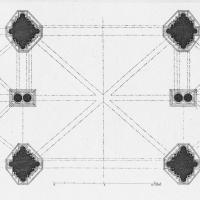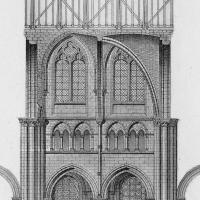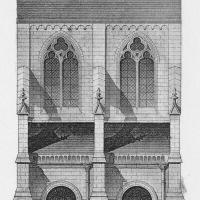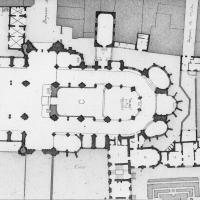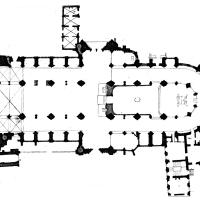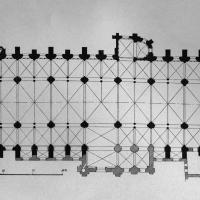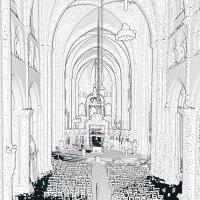Images
VR Tour
Notes
Date
Begun ca. 1130
Plan
An aisled basilica originally with no transept - the transept was added in the 13th-16th-centuries, originally the plan had two lateral apsed chapels in the choir, the northern chapel dedicated to John the Baptist. The chevet is terminated in five-segmented hemicycle ringed by an ambulatory which originally had only one rectangular chapel in the axis. In the vaulting of the chevet we find a transition from a groin and half dome arrangement in the chapel of Saint John the Baptist to rib vaults in the ambulatory.
Elevation
Three-storey elevation of arcade supported on an alternation of compound piers and double columns, triforium (looking like a gallery) and clerestory. The original clerestory window was low, made-up of double lancets. The clerestory was entirely redone.
Chronology
Construction of the gothic cathedral is though to have been begun under the Archbishop Henri Sanglier (1122-1142 ). It is possible that construction (c. 1140) had begun before the chevet of Saint-Denis. Note that the wide central vessel (15.25m) the massive structural forms cylindrical columns, stable framework based on a square based draws heavily from Roman forms. The mass supports the lofty superstructure with flyers that probably date from the early construction. Work was continued by Archbishop Hugues de Toucy (1142-1168) with the consecration of altar of Saints Peter and Paul by Pope Alexander III, on April 19th, 1162, who also gave indulgences to help completion of work. The cathedral was said to have been almost finished at death of Hugues de Toucy (1168). The western frontispiece was begun towards the 1190's. In 1268 the south tower of the western frontispiece collapsed, causing repairs which lasted twenty years. In the 1290's and into the late gothic period chapels were added between nave buttresses.
Sculptural Program
The three sculpted portals on the west façade of the Cathédrale St. Etienne date from several phases in the construction of the church. The north portal, depicting the life and martyrdom of St. John the Baptist, dates from the phase of construction occurring around the fire of 1184. The central portal includes elements from two construction phases. The trumeau sculpture and voussoirs were carved just after the north portal, around 1190-1200. However, the tympanum was replaced around 1270, along with the entire south portal, which had to be rebuilt after the collapse of the south tower in 1268. It displays the Coronation of the Virgin, and was probably remade in the manner of the original portal, using models from the Paris region.
The north portal shows John the Baptist as a prefiguration of Christ. The lintel depicts, on the left, John performing Christ's baptism. In the center, under an architectural canopy, Herod's Banquet is shown. To the right is shown the beheading of John the Baptist. In the tympanum above, Christ is shown in majesty flanked by two angels. The voussoirs are historiated in the manner of Le Mans and Saint-Loup-de-Naud, and depict multi-figure scenes from the life of John the Baptist. There would have originally been three jamb figures on each side of the portal, however now only their socle figures remain. The embrasures have medallions depicting on the left Avaritia, and on the right Largitas. It is known that the cathedral at Sens possessed relics of St. John the Baptist, and that the chapel dedicated to him can be reached most easily through this north portal. It was probably sculpted by the same workshop that had soon before completed work on the central portal at Mantes. Similarities in fluid drapery and minute details of carving point to the connection with Mantes.
The tympanum of the central portal, redone in the 1270s, shows scenes from the life of St. Stephen, to whom the cathedral is dedicated. The lintel shows Stephen preaching, his martyrdom, and his soul being carried to heaven. The tympanum shows Christ in Majesty. These narrative details are set within Court Style tracery elements, almost as though they are stained glass narratives. This is unique, and the only known precedent, the portal of Saint-Nicaise at Reims, was destroyed.
It is thought that the central portal might originally have contained Christ in Majesty at the Second Coming, as the surviving early figures attest to this configuration. The voussoirs contain angels, deacons, martyrs, and Virtues. The jamb figures would have originally been images of the twelve Apostles, though all are now missing. The trumeau has an original figure of St. Stephen. The socles below the jamb sculptures show, on the upper register, the Liberal Arts, and on the lower register the Labors of the Month. The doorposts to either side of the entrance have the Wise and Foolish Virgins carved in low relief. Medallions in the spandrels above the portal show, on the left, the open gates of Paradise, and on the right the closed gates. The figures that date from the earlier incarnation of this portal reflect a strong classicizing trend in the figure style of the late twelfth century. There is more attention paid to a naturalistic representation of bodies and the drapery that falls on them. The fragments of heads that remain from the jamb statues also show an embrace of classical models, with the striking realism of their physiognomies. These two portals, according to Williamson, reflect both a close of the first gothic period in the Ile-de-France region, and the first steps towards a maturity of style reached in the thirteenth century, when the workshops of the Chartres transepts and Notre Dame de Paris looked to Sens as a prototype.
Significance
Important because it is among those experimental early gothic buildings reaching back to various antecedents including Roman, and Norman. Sens is closely linked with Saint-Quiriace in Provins. For Jean Bony Sens suggests that no single formula and not even the prestige of Suger's Saint-Denis could exhaust the creative power of the new Gothic "urge" for ordered spaciousness. There is a wonderful surrounding synod hall and spectacular group of building of the Archbishop.
Location
Bibliography
Henriet, Jacques, "La cathédrale Saint-Etienne de Sens. Le parti du premier maître et les campagnes du XIIe. siècle,"Bull mon., 140 1982, 81-174
Severens, K., "The Cathedral of Sens and Its Influence in the Twelfth Century," PhD. diss., Johns Hopkins, 1968 AA 452 Se6 Se83
-----, "William of Sens and the Double Columns at Sens and Canterbury" Jl Warburg and Courtauld Institutes, 1970 307-313
-----, "The Early Campaigns at Sens, 1140-1145," J.S.A.H., XXIX, 1970, 97-107
-----, "The Continuous Plan of Sens Cathedral," JSAH, 1975, 198-207



